
The members of the Carter Lab are the carter Lab.
Without people, a lab is just an empty room full of potential.
With the people listed on this page, the lab has become a truly special place.
The lab and office areas here at CSULB have been a place for scientific research, but they have also been a second home, a study refuge, a "living room", a movie theater, a dog's territory, and a place to meet people who become as close as family.
We have shared late nights and weekends imaging fly wings, making fly food, and watching flies mate. Scientific careers have begun here and blossomed into publications, conference posters, and admissions to graduate/professional schools.
We have also shared late night tears of sadness and difficult conversations. Friendships have been discovered here and we have shared the loss of loved ones together.
We have shared our love of science, our joy in discovery, and our appreciation for the contribution that each person brings to the lab.
Ashley J.R. Carter
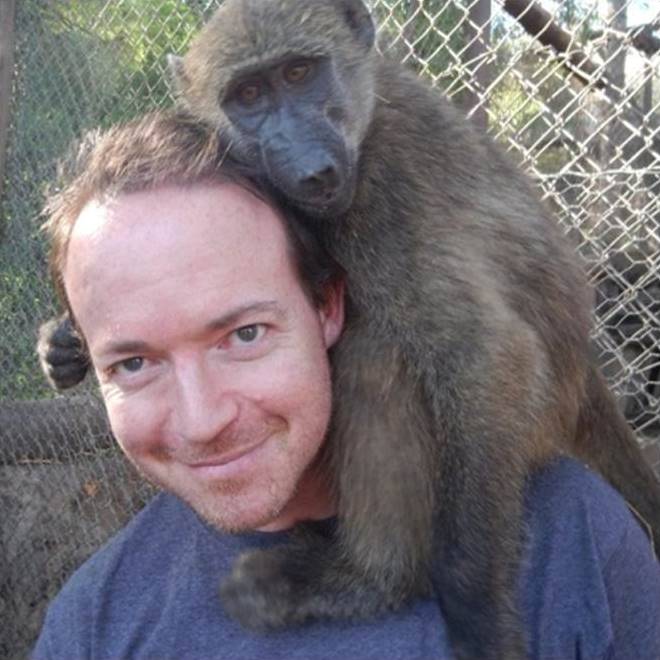

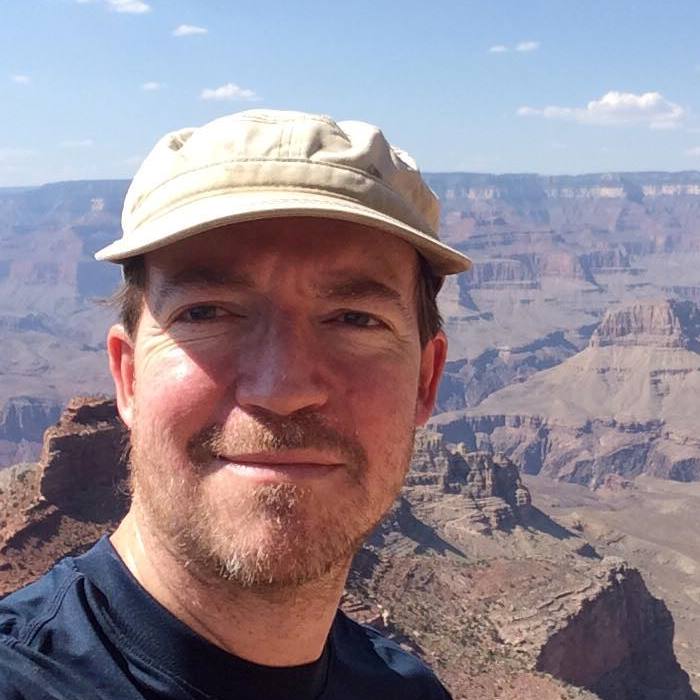
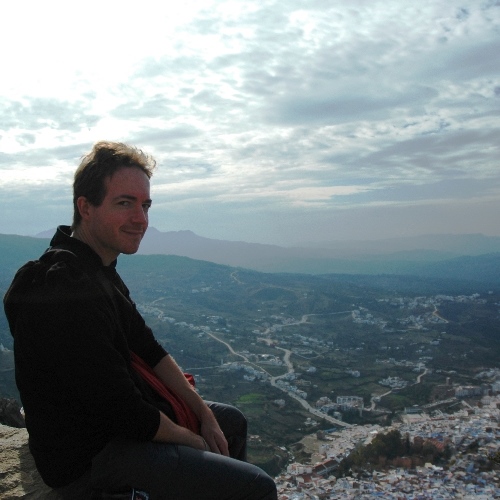
Dr. Carter graduated from an "Alternative" high school
(
Walden III) in Wisconsin. He went to his local state university (
UW Parkside) for his BS with majors in biology, chemistry, and mathematics (with a minor on physics). He then attended
Yale University for his PhD. Afterwards, he spent time as an NIH post-doctoral fellow at
Florida State University. Finally, he arrived at
California State University Long Beach in 2008.
Dr. Carter enjoys both teaching and research, and the students below mean more to him than they realize.
Abby Dangla Cruz (2019+) is investigating sugar metabolism in Drosophila.
Angel Winans (LSAMP, 2020+) is using comparative phylogenetic methods to study the evolution of brain size in humans.
Clara Noh is looking into evidence for seasonality of human reproduction.
Cynthia Lockwood (2020+) is conducting a literature survey of antagonistic pleiotropy in human disease alleles.
Elizabeth Moses (2020+) is using epidemioogical methods to study the effectiveness of public health policies to combat Coviid-19.
Kayla Raygoza (2020+) is using comparative phylogenetic methods to study the evolution of brain size in humans.
Noelle Chin (BUILD, Honors program, 2019+) is looking at global cancer incidence and mortality rates. She is in the CSULB BUILD program..
Kelley Unruh (2014-18) analyzed the size and shape of red blood cells from a variety of mammal species to trace the evolution of this trait and relate the changes to environmental variables. In the fall of 2018 she began studying veterinary medicine at Western University.
Ashley Smith (2013-17) conducted a field and museum based project looking at asymmetry. She also performed a study on the fluctuating asymmetry of kelp perch. This latter work was
published in a peer-reviewed research journal in 2016.
Natalie Lozano (2015-17) used individual-based computer simulations to study the degree to which modular or non-modular genetic architectures may influence the ability of populations to respond to selection. In 2017 she began a PhD program at UCLA.
Tamara Wurst (2013-16) conducted an artificial selection experiment examining the effects of non-directional selection regimes (e.g., stabilizing , disruptive) on the evolvability of Drosophila. After her MS she moved to Washington DC to get involved in non-profit medical research and data analysis.
Kimberly Dolphin (2012-15) studied factors that influence the choice of mates by female and male
Drosophila. Her projects involved examining the effects of learning and inbreeding. Some of her work was
published in 2015. In 2015 she began a PhD program at Colorado State University.
Kriska Parda (2010-14) studied long-term changes in fitness in genetic crosses between divergent inbred lines of Drosophila melanogaster in order to measure outcrossing depression. After graduating she began teaching positions at a local community college and CSULB.
Alexandra Papagno (Uhl) (2010-12) studied whether human preferences for certain traits are influenced by their frequency in the population. Her project involved an eye-color preference study with human subjects. In 2012 she began a PhD program at Tubingen University in Germany.
Kevin Golden (Biostatistics, fall 2016) spent time developing hands-on activities to incorporate into the biostatistics course here at CSULB. He also edited the lab manual for accuracy and clarity.
Jennifer Branson (Biostatistics, spring 2013) designed an activity module using hand dynamometers for use in the lab sections of this course.
Matt Coy (Evolution, spring 2013) assisted with grading and presented a lecture at the end of the semester on creationism and the teaching of evolution in the US.
Pauline Blaimont (Evolution, spring 2013) assisted with grading and presented a lecture at the end of the semester on the evolution of lizards and dinosaurs.
Tamara Wurst (Evolution, fall 2012) assisted with grading and presented a lecture at the end of the semester on the evolution of language/linguistics.
Kara Oculato (Evolution, fall 2010, spring 2011) assisted with grading and presented a lecture at the end of the semester on sexual selection.
Kristell Yap (Biostatistics, spring 2012) assisted with grading and presented a lecture on the "odds ratio" statistic as used in biology and medicine. After graduation she became a LAUSD teacher.
Mary Cruz (Evolution, fall 2011) assisted with grading and presented a lecture describing the evolutionary history of birds and how their evolution illustrates several of the concepts described earlier in the course.
Joanna Hoegerman (Evolution, fall 2010, spring 2011) assisted with grading and presented a lecture each semester on plant evolution. She also presented an educational ethics module to several lab sections of Bio 260 and participated in an assessment of its effectiveness.
Jenny Pham (Evolution, spring 2010) assisted with grading and presented a lecture describing the ways in which mutations occur and how they contribute to the process of evolution at the molecular level. In the fall of 2011 she began a PhD program at Harvard University.
Ebony Flowers (Biostatistics, spring 2009) assisted with grading and presented a lecture describing the procedures used by the Food and Drug Administration (FDA) to approve drugs and how some of the techniques learned in class are used.
Deanna Worden (Evolution, spring 2009) assisted with grading and presented a lecture describing the evolutionary history of whales and how their evolution illustrates several of the concepts described earlier in the course.

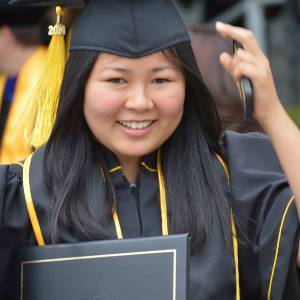
Albert Dickan (Honors program) (2011-2013) conducted a phylogenetic study of tooth evolution in mammals.
Alex Plong (2010-2011) assisted Kriska Parda with her study of outbreeding depression in Drosophila (see above). He moved to Judy Brusslan's lab here at CSULB because of his interest in molecular work.
Alex Salomon (2012-2013) conducted preliminary work for a phylogenetic study of penis evolution in mammals. He moved to Kelly Young's lab here at CSULB because of his interest in molecular work and physiology.
Alexandra Bangean (2018-2019) worked with Denys Rujchanarong on a study investigating the effects of low and hgh sugars diets in Drosophila.
Allen Twu (2010-2011) worked on the large group projects in the fall of 2010 and spring of 2011. He moved to Flora Banuett's lab here at CSULB because of his interest in microbiology.
Amanda Berkey (2010-2011) assisted Kriska Parda with her study of outbreeding depression in Drosophila (see above).
Amisha Thakkar (2014-2016) worked with Kim Dolphin on mate choice studies and with Tamara Wurst on a project looking at the effects of selection on evolvability in Drosophila.
Amberle Mckee (2011-2012) worked with Shanna Newton on a study of mate choice behavior by female
Drosophila with varying degrees of inbreeding. This work resulted in a
publication. She was awarded the biology department's "Outstanding Graduate" award at graduation in 2014.
Andrea Balogh (2008-2009) conducted a comparative literature survey of mammalian brain size allometric data.
Andrew Nguyen (2010-2012) conducted a literature survey of antagonistic pleiotropy in human disease alleles. This work resulted in a
publication. He was awarded the biology department's "Outstanding Graduate" award at graduation in 2012.
Andrew Sun (2010-2013) assisted Kriska Parda with her study of outbreeding depression in Drosophila (see above).He also studied hormesis with Shanna Newton.
Annessa Du (2013-2014) worked with Kim Dolphin on mate choice behavior in Drosophila, but her main project involved looking at which eye colors male and female human subjects preferred.
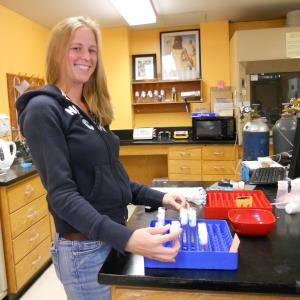
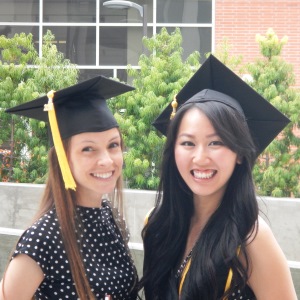
Anthony Rodriguez (2018-2020) looked at the effects of weather conditions on sickle cell caused acute VOC episodes in LA area hospitals.
Ashley Smith (2011-2013) worked with others in the lab and then decided to pursue graduate studies in the lab (see above).
Ashley Vo (2015-2016) worked with Hannah Bellafard on a literature survey of antagonistic pleiotropy in human disease alleles. In 2013 she began medical school in San Francisco.
Beverly Delarosa (2013-2016) worked with Hanna Hur to analyze UK research funding, prevalence and mortality data for a variety of cancers. This work resulted in a
publication.
Branda Bui (2016-2017) conducted a study of the synergistic effects of different chemical stresses in lab Drosophila. In 2019 she started podiatry school at Western because she likes feet.
Breanne Fletcher (2013-2014) worked with Kim Dolphin on mate choice studies and with Tamara Wurst on a project looking at the effects of selection on evolvability in Drosophila.
Brent DeShazo (2013-2014) worked with Kim Dolphin on mate choice behavior in Drosophila and developed a study examining the potential for spite and racism to alter physical performance on physical challenges.
Bridget Diviak (BUILD, 2018-2020) conducted a study on the epigenetic inheritance of food preference in Drosophila. In 2020 she began a PhD program in molecular genetics at Arizona State University.
Cathryn Shults (2009) studied the developmental filter effect in Drosophila.
Cecine Nguyen (LSAMP, 2009-2012) analyzed US research funding, prevalence and mortality data for a variety of cancers. This work resulted in a
publication.
Christina Bonadonna (2006-2018) studied fluctuating asymmetry in the range of body segments in pill bugs.
Cody Fees (2015-2017) conducted a study of the synergistic effects of different chemical stresses in lab Drosophila. In 2019 he started the MS program at CSULB.
Cody Horton (2016-2018) conducted a study of the types of carbohydrates that can be metabolized by Drosophila.
David Giovanni (2012-2013) worked with Shanna Newton on a project investigating hormesis in Drosophila.
Denys Rujchanarong (BUILD, Honors program, 2017-2019) worked with Alexandra Bangean on a study investigating the effects of low and high sugars diets in Drosophila. In 2019 she started a PhD program at UC San Francisco.
Dominique Monsibais (2011) worked on a large group project that measured Drosophila wing asymmetry from a number of different populations.
Eduardo Flores (2016-2017) worked with Vanessa Gonzales to study the effect of artificial sweeteners on development in Drosophila.
Edward Tran (2010) worked on a large group project that measured FA in inbred and outbred Drosophila.
Elizabeth Juarez (2010) worked on a large group project that measured FA in inbred and outbred Drosophila.
Gerene Garcia (2009) measured Drosophila wing asymmetry to determine whether it varies between geographically distinct populations. She was awarded the biology department's "Outstanding Graduate" award at graduation in 2010.
Giovanni Artega (2008-2009) estimated the proportion of overall phenotypic variance due to developmental instability in Drosophila.
Grace Lee (2013) worked with Kim Dolphin on mate choice studies in Drosophila.
Hamish Clifford (2011-2012) conducted a bioinformatics study to determine whether evidence for Lamarckian processes exists.
Hannah Bellafard (BUILD, 2015-2017) studied the epigenetic inheritance of food preference in lab Drosophila. She also worked with Ashley Vo on a literature survey of antagonistic pleiotropy in human disease alleles.
Hannah Hur (2013-2015) worked with Beverly Delarosa to analyze UK research funding, prevalence and mortality data for a variety of cancers. This work resulted in a
publication.
Ivanna Guardino (2013-2015) analyzed published data from a famous ecologist and to identify evidence of fraud.
Jennifer Branson (2013) performed preliminary research and paperwork for a study examining the potential for spite and racism to alter physical performance on physical challenges.
Jeslin Bueno (2012-2016) worked with Shanna Newton on the hormesis project and on a habitat preference project. As a certified phlebotomist she also assisted with red blood cell studies after graduation. After CSULB she became a physician's assistant.
Jesse Rivas (LSAMP, 2015-2016) collected data from the primary research literature about the shapes and sizes of red blood cells in mammals and collected human blood samples to measure blood cell sizes directly.
Joseph Rajan (2016-2018) analyzed US data on research funding, prevalence and mortality data for a variety of medical conditions.
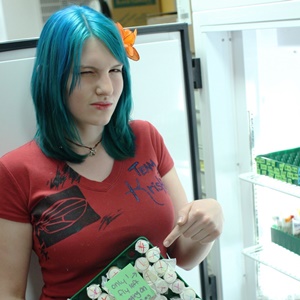
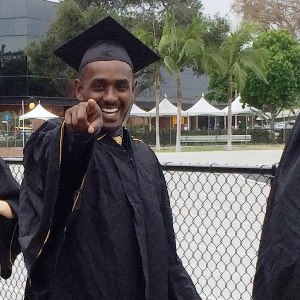
Jose Felix Cruz (2013-2015) worked with Jeslin Bueno on the habitat preference of lab Drosophila, with Joyce Kim on the synergistic effects of stress of chemical stress on Drosophila, and with Tamara Wurst on a project looking at the effects of selection on evolvability in Drosophila.
Joyce Kim (2012-2014) worked with Shanna Newton on a project investigating hormesis in Drosophila and conducted a study of the synergistic effects of different chemical stresses in lab Drosophila.
Julia Hewitt (2018-2019) investigated the effects of hydration on red blood cell size.
Julie Dao (2010-2012) assisted Kriska Parda with her study of outbreeding depression in Drosophila (see above). She also worked with Kim Dolphin on mate choice studies in Drosophila.
Kailey Nicosia (2018-2019) investigated the effects of hydration on red blood cell size. In 2019 she started a masters program in the UK.
Kasie Dorr (2012-2013) worked with Shanna Newton on a project investigating hormesis in Drosophila.
Kathy Vo (2015-2017) conducted a study of the synergistic effects of different chemical stresses in lab Drosophila. In 2017 she started the MS program at CSULB.
Katie Henson (BUILD, 2016-2019) studied sexual selection and mate choice in Drosophila. In 2020 she began a PhD program in molecular genetics at Duke University.
Kelley Unruh (2012-14) worked with others in the lab and then decided to pursue graduate studies in the lab (see above).
Kelsey Dix (2013-2014) worked with Joyce Kim on a study of the synergistic effects of different chemical stresses in lab Drosophila. Her main project looked at the phenotypes of romantic pairs of individuals in successful and unsuccessful films.
Kirolos George (2015-2016) worked with Tamara Wurst on a project looking at the effects of selection on evolvability in Drosophila. He then worked on a project examining the "French Paradox."
Kriska Parda (2009-2010) worked with others in the lab and then decided to pursue graduate studies in the lab (see above).
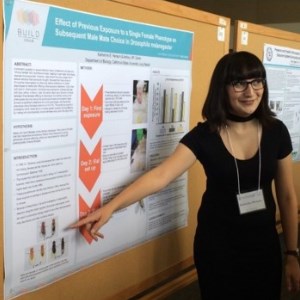
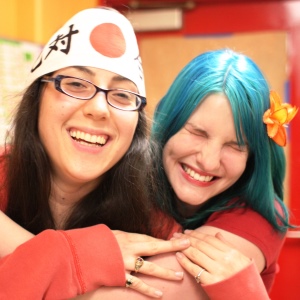
Kristell Yap (2010-2014) worked with Matt Coy on a project that examined the evolution of resistance to salt in Drosophila. They also designed a teaching module appropriate for use in high schools based on the results. She is now a teacher with LAUSD.
Lareine Mikhael (2015-2016) worked with Tamara Wurst on a project looking at the effects of selection on evolvability in Drosophila. She then worked on a project examining the "French Paradox."
Leslie Healis (2009) conducted a comparative literature survey of allometric data in order to determine whether data from wild animals is consistent with a hypothesis that prey species tend to have relatively larger offspring than predator species.
Lilhac Medina (LSAMP, 2012-2014) Lilhac worked with Kim Dolphin on mate choice behavior in Drosophila. In 2013 she began a PhD program at the University of Minnesota, Duluth
Lindsey Lawmaster (2016-2017) assisted Katie Henson with her project. In 2017 she entered CSULB's stem cell certificate program.
Lindsey Noordman (2011-2012) conducted a literature-based phylogenetic study of group size evolution in cetaceans.
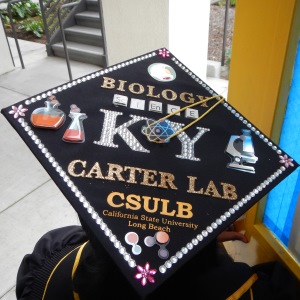
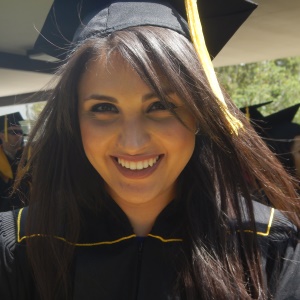
Linda Nguyen (2010-2012) assisted Kriska Parda with her study of outbreeding depression in Drosophila (see above). Linda was an imaging phenom with a reputation as the fastest and best imager in the lab.
Luis Flores (LSAMP, 2017-2019) studied evidence for speciation in laboratory strains of Drosophila. He started as a summer Bridges student (see below).
Marcell Cadney (LSAMP, 2010-2013) conducted a comparative literature survey of mammalian brain size allometric data. After graduating he began an internship at the LA County Natural History Museum. In 2015 he began a PhD program at UC Riverside.
Marissa Andaloro (2014-2016) worked with Kim Dolphin on mate choice behavior in Drosophila and with Joyce Kim on a study of the synergistic effects of different chemical stresses in lab Drosophila.
Maryrose Manibog (2010-2012) assisted Kriska Parda with her study of outbreeding depression in Drosophila (see above).
Matan Grunfeld (2019-2020) investigated the effects of hydration on red blood cell size.

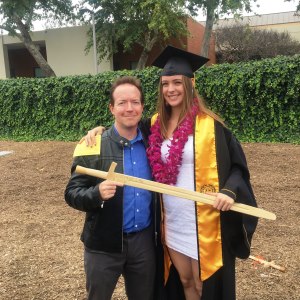
Matt Coy (2011-2014) worked with Kristell Yap on a project that examined the evolution of resistance to salt in Drosophila. They also designed a teaching module appropriate for use in high schools based on the results.
Molly Jorges (2010-2012) collected literature data about the patterns of social dominance in primate species. After graduating from CSULB she took a position in Africa raising baby baboons by hand and designing their enclosures and enrichment activities. She is responsible for Dr. Carter's connection to baboons.
Nancy "Abby" Collado (2013-2015) worked with Tamara Wurst on a project looking at the effects of selection on evolvability in Drosophila.
Nancy To (2010-2012) assisted Kriska Parda with her study of outbreeding depression in Drosophila (see above).
Natalie Lozano (2013-2015) worked with others in the lab and then decided to pursue graduate studies in the lab (see above).
Natasha Ginyard (2015-2016) worked with Tamara Wurst on a project looking at the effects of selection on evolvability in Drosophila.
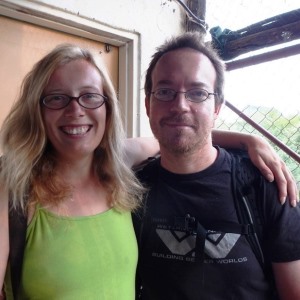
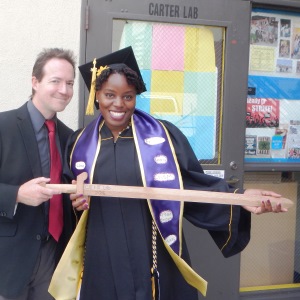
Nikki Viola (2010-2011) assisted Kriska Parda with her study of outbreeding depression in Drosophila (see above).
Noa Grunfeld (2019-2020) investigated the effects of hydration on red blood cell size.
Pauline Blaimont (RISE, 2011-2013) Pauline studied the epigenetic inheritance of food preference in lab Drosophila. In 2013 she began a PhD program at UC Santa Cruz studying herpetology and in 2019 she earned that PhD and took a position as an instructor at Rider College.
Phuong Hunyh (2013-2014, 2014-2015) worked with Kim Dolphin on mate choice studies and with Tamara Wurst on a project looking at the effects of selection on evolvability in Drosophila.
Renee Leonard (2010-2011) conducted experiments to gather data on whether a "mortality filter effect" may explain conflicting results from studies of FA and stress.
Roberto Flores (2019-2020) studied evidence for speciation in laboratory strains of Drosophila.
Rudy Villegas (MARC, 2012-2015) worked with Shanna Newton on the hormesis project and Joyce Kim on the stress synergy project. He also conducted a literature-based project studying the evolution of social group size in whales. In 2015 he began a PhD program at the University of Nebraska-Lincoln.
Sam Degregori (MARC, 2013-2016) conducted an allometric study to determine whether data from wild animals is consistent with a hypothesis that prey species tend to have relatively larger offspring than predator species. In 2016 he began a PhD program at UCLA.
Sarah Bradley (2017-2019) compared the asymmetry of plants living in areas with differing levels of airborne pollution.
Selene Jovel (2012-2015) collected data from the primary research literature about the shapes and sizes of red blood cells in mammals and collected human blood samples to measure blood cell sizes directly.
Shanna Newton (RISE, 2010-2013) conducted a study of mate choice behavior by female
Drosophila with Amberle McKee. This work resulted in a
publication. She then conducted a large-scale study of hormesis in
Drosophila. In 2013 she began a PhD program at UC San Diego.
Shelby Barnachea (2012-2015) collected data from the primary research literature about the shapes and sizes of red blood cells in mammals and collected human blood samples to measure blood cell sizes directly.
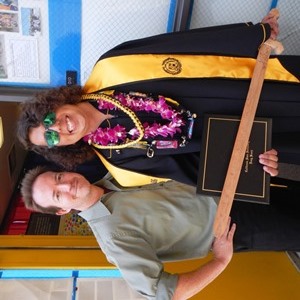
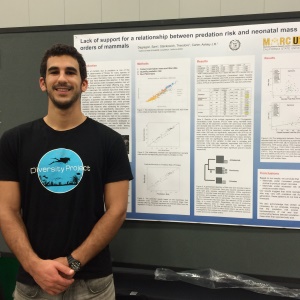
Shray Patel (UROP, 2017) assisted Katie Henson with her mate choice experiment.
Sonya Babayan (2010-2011) worked on several group projects in the fall of 2010 and spring of 2011. She enjoyed the lab, but had to devote more time to her work in the library and was unable to continue in the lab.
Stanley Sweeting (2010-2012) assisted in the design and IRB approval process for a study examining the potential for spite and racism to alter physical performance on physical challenges. Stanley also co-authored an internal CSULB grant to purchase equipment. In 2013 he began medical school at Howard University.
Takuma Terrakdao (2015-2017) conducted a study of hormesis in Drosophila. In 2017 he began working as an environmental consultant.
Tracy Leaning (2018) assisted Vanessa Gonzales and Denys Rujchanarong with their projects. In 2019 she entered CSULB's stem cell certificate program.
Trisha carter (2012) worked with Kim Dolphin on mate choice studies in Drosophila.
Valeria Cheron (2013-2014) worked with Tamara Wurst on a project looking at the effects of selection on evolvability in Drosophila.
Vanessa Gonzales (BUILD, 2017-2019) worked with Eduardo Flores to study the effect of artificial sweeteners on development in Drosophila.
Venus Alaee (2018-2020) after a study on phenotypes of actors in film didn't yield interesting results, she worked on a project investigating the evolution of eudiamonic happiness.
Kristie Tom (Summer 2019) examined food choice preferences in Drosophila for media containing various fruit extracts.
Olena Lens (Summer 2019) compared the reproduction and mortality in Drosophila raised on various commercially available media.
Luis Flores (Summer 2017) studied evidence for speciation in laboratory strains of Drosophila.
Alexandra Carranza (Summer 2015) tested the effects of lead on mortality in Drosophila.
Hilario Avena (Summer 2015) tested the effects of lead on asymmetry in Drosophila.
Julio Castro (Summer 2011) examined intrapopulation and interpopulation mate preference in Drosophila.
Iris Aguilar (Summer 2010) measured directional asymmetry (DA) of Drosophila wing size and compared males to females.
Natalie Maltz (Summer 2010) measured directional asymmetry (DA) of Drosophila wing size and compared different species for phylogenetically associated similarities.
Karen Monge (Summer 2010) measured directional asymmetry (DA) of Drosophila wing size within the same species to determine whether variation for DA exists at that level.
Jessica Weise (Summer 2009) discovered what appeared to be a phenotypic mutation that causes extra wing veins in Drosophila and worked to identify its chromosomal location.
Andrea Akabike (Summer 2009) tested mortality differences in Drosophila caused by the presence or absence of dry yeast added to the standard media.
Shelley Peng (Summer 2009) tested mortality differences in Drosophila caused by the presence or absence of artificial dyes added to the standard media.
Crystal Reynaga (2013) worked on a series of mate choice behavior projects. In 2013 she began a PhD program.
Jane Lopez (2013) worked on a Drosophila habitat preference project.
Jocelyn Kim (2012) worked with Kriska, Matt, and Pauline on their projects. She has the superhuman ability to count flies for hours without fatigue or complaint.
Leane Nasrallah (2013-14) studied a novel hypothesis for the French paradox and presented these results at her high school's science fair.
Natalie Tiberio (2011) Natalie conducted a survey of evidence for beneficial effects apparent in OMIM listings for genetic diseases.
Wilson Lee (2010-11) derived approximations for the fixation time of advantageous alleles with varying degrees of dominance. In 2011 he began a PhD program at UCLA.